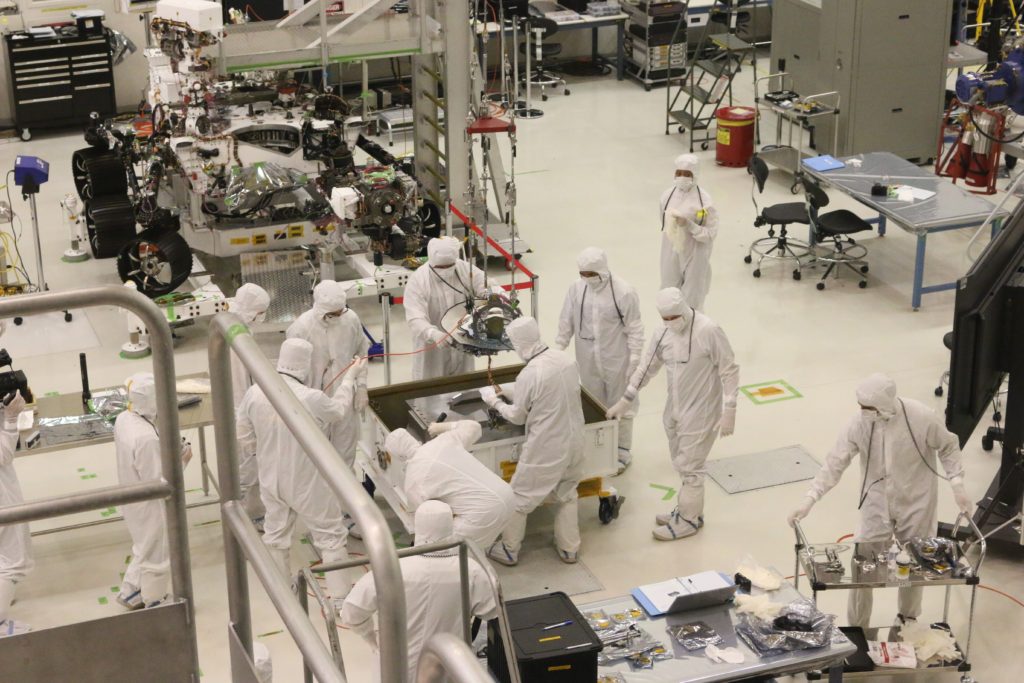Photo by Laurel and Michael Evans on Unsplash
Industry 1.0 was all about the transfer of manufacturing from humans to machines. Industry 2.0 increased productivity by using technology-enabled information and faster transfer of goods. With Industry 3.0, computers took over machines and allowed efficient manufacturing compared to Industry 2.0.
Today, we are in Industry 4.0. This is all about data gathering at each stage of end-to-end manufacturing to allow the right product at the right place at the right time with minimal waste and downtime.
In order to fully achieve Industry 4.0, there is a need to understand how efficiency can be achieved, and to do so one has to look at each stage from a data point of view. Without capturing data information at every stage of manufacturing, it is difficult to remove bottlenecks.

PROCUREMENT
Procurement is the defacto process for any manufacturing domain. Does not matter what type of products are being developed, manufacturers have to keep track of inventory.
During the pre-computer era, this process required manual bookkeeping and then actions would need to be taken based on when raw materials are going to be out of stock. This meant the raw materials were ordered without understanding whether the market demand, thus leading to waste of manufactured goods and money.
In the post-computer era, this process moved from books to computers. Software was deployed that could keep track and alert beforehand. However, this process was still similar to the pre-computer era, except that humans could do be used for more productive work than bookkeeping.

In today’s day and age, the need is to make procurement more real-time, smart and market demand-driven. Toyota Production System follows the concept of Just-In-Time (JIT) manufacturing since the 1970s. It is more relevant today where cost saving is critical while ensuring market demand is met. In order to achieve efficient manufacturing, data from different vendors need to be connected in real-time. This allows the end customer to understand how late OR how early they should procure the raw material based on the demand of the product.
Enterprise Resource Planning tools are increasingly being used to provide such solutions. However, they cost a fortune to deploy and manage. Dedicated teams are required. A big enterprise might find it easy to make use of such tools, but small manufacturers will financially struggle to get such a system deployed.
With the advancement in connectivity and computing if such gaps can be filled while ensuring minimum impact on the expense, then procurement (the stepping stone of manufacturing) can be made more efficient by tapping into the data information.
MANUFACTURING
After procurement, comes the real task of manufacturing. When goods are being manufactured the focus is on cost efficiency by achieving maximum uptime with minimum downtime. We are living in an always-on world, where things need to keep running 24×7 to achieve more profits year on year. The same applies to machines that are churning out goods. Here too, does not matter what domain is being catered; machines and tools need to be up and running all the time. An idle machine in manufacturing is a liability.
In order to achieve 100% uptime, a critical factor is to predict downtime. Predictive downtime requires capturing real-time data. Data can be about how old the parts are, have parts are aging based on usage, when should parts be replaced and serviced, when should machine go through calibration, is demand going to keep machine idle, how can resources be planned efficiently and many other data points.

Oil and gas production has to be up and running 100% of the time. To achieve 100% uptime, the oil and gas industry has taken an advanced approach and adapted to data-enabled production. Manufacturing in today’s date is not just about production engineering, it has to have a data engineering aspect where data is captured, stored, analyzed, and presented for pro-active action.
Capturing all such data points and presenting in a single dashboard can provide much more insight into the manufacture than waiting for the machine to go down. All of this requires a drastic change in the way of working so that resource planning for manufacturing is made more data-driven. Data-enabled manufacturing solutions are already present and it is time many manufacturers start taking data aspect into production to achieve 100% uptime.
TESTING
Testing is the most critical process during manufacturing. Now only the product should meet all the requirements under quality, reliability, and operating conditions, the data generated during the testing process should also be analyzed thoroughly and stored in case of any customer return.

The last thing the manufacture wants is another Samsung Galaxy Note 7 situation where the smartphone exploded due to faults in the battery. Depending on the product the test data can be captured using different tools and processes. This requires implementing a software interface that can log the data during the testing process. Then, based on the specifications applicable, it can be then put through different operating conditions, quality, and reliability checks before putting through interface testing for a real-world application.
Today, there are different analytical tools that are available in the market that are proving to be critical for productivity and probability. Data generation, data analysis, data action, and data storage in itself going to be a trillion-dollar industry. The solutions provided for manufacturing analytics with respect to testing are many. It is critical for product development and manufacturing companies to embrace and find ways to implement data-driven testing within the manufacturing cycle.
After all the testing and quality requirements have been met the product can move to the next stage of manufacturing.
PACKAGING
In the US alone, 165 Billion packages are shipped every year and this is just e-commerce data. 50% of these packages end up being waste and not getting recycled. This clearly points to the need to make packaging more efficient.
LimeLoop and Repack provide solutions to enable re-use of packaging. However, this requires tracking of where the package is being used and then need to re-ship the empty packages. This is not a practical solution for a custom manufacturer dealing directly with businesses that are not into e-commerce like car manufacturers, electronic design and manufacturing, and many other domains.
In order to achieve efficiency in packaging, manufacturers need to follow data enabled packaging by considering following points:
- Quality
- Waste
- Usage

Quality enables whether the product being manufactured and being shipped in certain packaging meets the required industry standards. This means tracking the data points of happenings with respect to packaging. The old-age process of using cardboards to package is only going to add cost and eventually leads to waste. To understand where cost savings can be achieved, it is critical to capture data points on the usage of the package. All this eventually allows innovation within the packaging domain to make more informed decisions.
For example: Is there a way to package products in small form factors which can in turn save packaging cost including on shipping? This cannot be achieved by package innovation, which requires data capturing of the packaging within the manufacturing unit.
LOGISTICS
Out of all the blocks of manufacturing, logistics is the most advanced and has embraced data faster than any other sector. It has been the leader in data usage and driving it for the efficient delivery of goods.
For manufacturer data usage in logistics means tracking the market for the least expensive way to ship the goods from point A to point B. Traditionally, big manufacturers try to save cost by means of entering contracts with giants like UPS, FedEx and DHL, which will provide cheaper cost for a certain number of shipments for the agreed period. However, smaller or mid-scale manufacturers do not have this luxury.
Thanks to data sharing there are more than ever data points on the way to ship goods from one place to another and also understand a cheaper way to ship the product to the end customer. There are already many companies that have started to provide data-driven logistics to small and medium scale industries.
To save cost, the planning team also needs to become more data-aware and then find ways to implement strategies to utilize cost effect logistics.

Currently, the majority of the manufacturer is shipping even before understanding market needs. That also means manufacturing before capturing demand. To save cost and be more efficient demand can be re-factored by implementing just in time stocking to save cost on shipping the product earlier than required.
Logistics data analytics just does not apply to final goods, but to also to the raw materials. This is why the scope to save costs is much broader than one can imagine. It is time manufacturers embrace data tools to provide more insights to cost savings on logistics.
DISTRIBUTION
Distribution is more about after-sales handling when manufactured goods have shipped out. Data in the distribution has been more critical for e-commerce where manufacturers can directly engage with customers by eliminating distributors.
In the age of data drove process and decision making, it is more critical to understand how data allows distributors to manage inventory and tap into the next era of the supply chain. For manufacturers, the less the number of stops from the factory to end customers, the more profits they can make. For distributors to be relevant, they need to keep track of industry demand and come up with a supply chain system that provides cost-saving and at the same time real-time delivery.

If the customer needs the parts as soon as possible for the critical task that is stopping the production, then it becomes all about who can provide the needed goods in the fastest way possible. For such scenarios, it is important to tap into the data points in terms of usage and manufacturing.
- From customers, distributors need to understand ways to leverage real-time usage of the parts so that they can ship when required and in some cases beforehand considering the aging the raw material has wen through.
- From the manufacturer’s side, they need to keep track of real manufacturing throughout. This has to be the balance of demand and supply without getting into waste.
This requires the implementation and usage of data tools that can provide distributors more than just inventory stock. There are already solutions out in the market, it is just about investing and understanding how distribution make most of the data-driven manufacturing.
INDUSTRY 5.0
As manufacturer look to increase the EBITDA, industry 4.0 is going to be a big driver for it by leveraging data points at each step of the manufacturing.

In a few years, the industry will soon transition to Industry 5.0 which will be more about smart automation with respect to decision making. These smart decisions will be towards reducing waste, enabling efficient processes hopefully without impacting human resources, and delivering what the customer needs by adapting products to their requirement.
It is going to be a combination of Data, Connectivity, Intelligence, and Automation. May be 3D Printers are the first step towards Industry 5.0.
McKinsey & Company has useful resources for those interested in learning more about data enabled manufacturing.




















